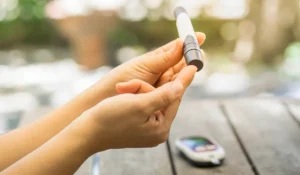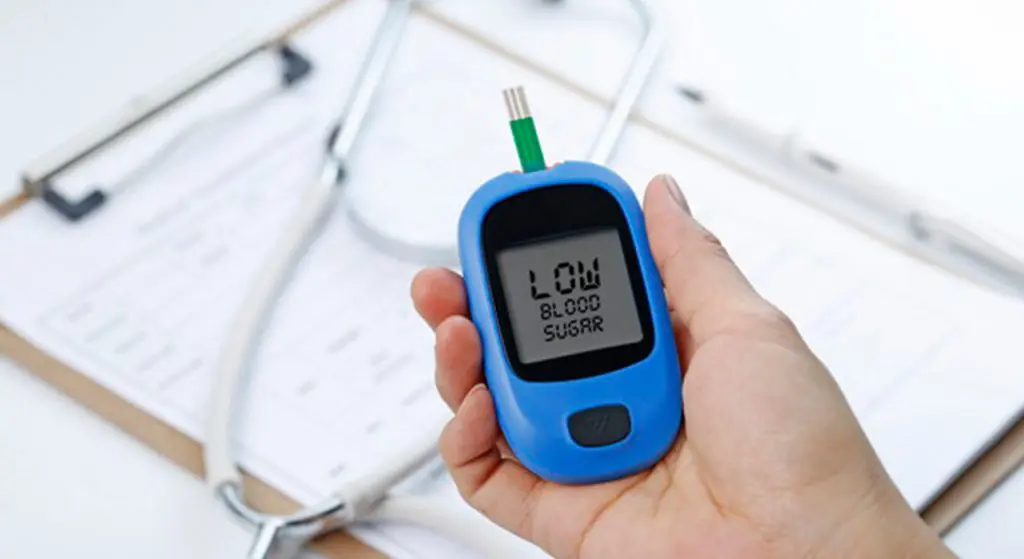Hypoglycemia, a condition characterized by lower-than-normal blood sugar levels, poses significant challenges. Managing this condition effectively requires a nuanced understanding of both the physiological processes involved and the therapeutic strategies available. This blog post aims to shed light on hypoglycemic therapy, offering insights into treatment options, lifestyle adjustments, and immediate treatment techniques to prevent further severe hypoglycemic episodes.
Contents
What Is Oral Hypoglycemic Therapy?
 Oral hypoglycemic therapy refers to the use of oral medications to lower blood glucose levels in individuals with diabetes, primarily those with type 2 diabetes. These medications are designed to help manage blood sugar levels by enhancing the body’s ability to utilize insulin more effectively. And, increasing insulin production, reducing the liver’s glucose production, or delaying the absorption of sugar from the intestines.
Oral hypoglycemic therapy refers to the use of oral medications to lower blood glucose levels in individuals with diabetes, primarily those with type 2 diabetes. These medications are designed to help manage blood sugar levels by enhancing the body’s ability to utilize insulin more effectively. And, increasing insulin production, reducing the liver’s glucose production, or delaying the absorption of sugar from the intestines.
They play a crucial role in the diabetes management plan, often used in conjunction with lifestyle modifications. Different classes of oral hypoglycemic agents target various pathways in the body’s metabolism of glucose.
The effectiveness of oral hypoglycemic therapy hinges on the careful selection and combination of medications to suit the patient’s condition. As diabetes progresses, the regimen may need adjustments, including the addition of other oral agents or insulin, to maintain optimal blood glucose control.
What Is The Hypoglycemic Medication For Diabetes?
Hypoglycemic medications for diabetes are designed to lower blood sugar levels and are particularly used in the management of type 2 diabetes. These medications fall into several categories, each working in different ways to manage blood sugar levels:
- Sulfonylureas: These drugs increase insulin production from the pancreas. Examples include glipizide (Glucotrol), glyburide (DiaBeta, Glynase), and glimepiride (Amaryl).
- Biguanides: Metformin (Glucophage) is the most common example, which reduces glucose production by the liver and improves insulin sensitivity.
- Thiazolidinediones: Like rosiglitazone (Avandia) and pioglitazone (Actos), these improve insulin sensitivity.
- DPP-4 Inhibitors: These medications work by increasing incretin levels, which inhibit glucagon release, thereby increasing insulin secretion. Examples include sitagliptin (Januvia), saxagliptin (Onglyza), and linagliptin (Tradjenta).
- SGLT2 Inhibitors: This class reduces blood sugar by causing the kidneys to remove sugar from the body through the urine. Examples include canagliflozin (Invokana), dapagliflozin (Farxiga), and empagliflozin (Jardiance).
- Alpha-glucosidase inhibitors: Drugs like acarbose (Precose) and miglitol (Glyset) slow the absorption of carbohydrates in the intestines.
- Meglitinides: These stimulate the pancreas to release more insulin but for a shorter duration than sulfonylureas. Repaglinide (Prandin) and nateglinide (Starlix) are examples.
- GLP-1 Receptor Agonists: These injectable medications slow digestion and help lower blood sugar levels. Examples include exenatide (Byetta), liraglutide (Victoza), and dulaglutide (Trulicity).
Each of these medications can be used alone or in combination with others to help manage blood sugar levels effectively. The choice of medication, or combination of medications, depends on individual factors such as the patient’s health status, the presence of other medical conditions, potential side effects, and the medication’s effectiveness in controlling blood glucose levels.
Natural Approaches Used In Hypoglycemic Therapy
 Natural approaches to hypoglycemic therapy focus on lifestyle modifications, dietary adjustments, and the use of certain supplements and herbs that can help manage blood sugar levels. Here are some key natural strategies used in hypoglycemic therapy:
Natural approaches to hypoglycemic therapy focus on lifestyle modifications, dietary adjustments, and the use of certain supplements and herbs that can help manage blood sugar levels. Here are some key natural strategies used in hypoglycemic therapy:
Dietary Changes
Low Glycemic Index Foods: Foods with a low glycemic index are metabolized more slowly, providing a gradual release of sugar into the bloodstream. Incorporating foods like whole oats, lentils, most fruits, and non-starchy vegetables can help avoid the sharp spikes in blood glucose levels.
Fiber-Rich Foods: High-fiber foods not only slow the absorption of sugar but also contribute to a feeling of fullness, which can aid in weight management. Soluble fiber, in particular, found in oats, apples, and flaxseeds, has been noted for its blood sugar-lowering effects.
Portion Control: Regular, controlled portions of food can prevent the overconsumption of carbohydrates at any one time, helping to maintain steady blood sugar levels. This practice is especially beneficial in preventing post-meal hyperglycemia.
Physical Activity
Engaging in regular physical activity such as walking, cycling, or swimming for at least 30 minutes a day can enhance the body’s insulin sensitivity. This means that muscles can better utilize available glucose during and after exercise, lowering blood glucose levels. Additionally, exercise contributes to weight loss, which further improves insulin sensitivity and glucose metabolism.
Stress Management
Chronic stress can lead to the release of glucagon and cortisol, hormones that can raise blood sugar levels. Techniques like mindfulness meditation, yoga, and tai chi can reduce stress and have been shown to improve blood sugar control in some individuals. These practices not only help manage stress but also contribute to overall mental and physical health.
Herbal Remedies and Supplements
Cinnamon: Beyond its culinary uses, cinnamon has been studied for its potential to lower fasting blood sugar levels. Adding cinnamon to the diet, for example, sprinkling it on oatmeal or yogurt, can be an easy way to harness its benefits.
Fenugreek: This herb has been shown to improve glycemic control and insulin resistance, making it a valuable addition to the diet. Fenugreek seeds can be soaked overnight and consumed in the morning, or its powder can be added to dishes.
Alpha-lipoic Acid (ALA): ALA may improve insulin sensitivity and reduce symptoms of diabetic neuropathy. It’s available in supplement form and can be a part of a comprehensive approach to managing diabetes.
Chromium: This essential mineral enhances the action of insulin. Whole grains, nuts, and meats are good sources of chromium, but supplements are also available for those who might not get enough from their diet.
Berberine: Found in several plants, berberine is known for its ability to lower blood sugar levels similar to some pharmaceuticals. It’s recommended to consult a healthcare provider before starting berberine. Especially for individuals on other diabetes medications due to potential interactions.
Adequate Sleep
Lack of sleep can affect the body’s ability to regulate blood sugar by altering hormone levels and insulin sensitivity. Adults should aim for 7-9 hours of quality sleep per night. And, establishing a regular sleep schedule and creating a restful environment to support sleep health.
Implementing these natural approaches requires a balanced and thoughtful plan that complements medical treatments for hypoglycemia and diabetes. Always consult with healthcare professionals before making significant changes to your health regimen.
What Is The Immediate Hypoglycemic Treatment?
 Immediate treatment for hypoglycemia (low blood sugar) is crucial to quickly restore blood sugar levels to normal and prevent more serious symptoms, including loss of consciousness or seizures. Here are the general steps for immediate hypoglycemic treatment:
Immediate treatment for hypoglycemia (low blood sugar) is crucial to quickly restore blood sugar levels to normal and prevent more serious symptoms, including loss of consciousness or seizures. Here are the general steps for immediate hypoglycemic treatment:
For Mild to Moderate Hypoglycemia
1. Consume Fast-Acting Carbohydrates
The first step is to consume 15-20 grams of fast-acting carbohydrates. These are sugars or carbohydrates that are quickly absorbed by the body, raising blood sugar levels rapidly. Examples include:
- Glucose tablets or gels (follow package instructions for the correct dose).
- Fruit juice or regular soda (not diet) — about 4 ounces or 120 milliliters.
- Hard candies, jellybeans, or gummy candies — but be aware of the need to chew these well before swallowing.
- Honey or syrup — 1 tablespoon.
2. Recheck Blood Sugar After 15 Minutes
After consuming the fast-acting carbohydrate, wait for about 15 minutes and then recheck your blood sugar levels. If your blood sugar is still below 70 mg/dL (3.9 mmol/L) or you still feel symptoms of hypoglycemia, consume another 15-20 grams of fast-acting carbohydrates.
3. Consume a Snack or Meal
Once your blood sugar has returned to normal if it’s going to be a while before your next meal, eat a small snack. This should include carbohydrates and protein to help stabilize your blood sugar and prevent another drop. Examples include a piece of fruit and cheese or a half sandwich.
For Severe Hypoglycemia
Severe hypoglycemia is when a person is unable to treat themselves due to confusion, unconsciousness, or seizures. This requires an immediate intervention by another person:
- Administer Glucagon: If available, someone should administer a glucagon injection. Glucagon is a hormone that raises blood sugar levels quickly. People with diabetes who are at risk of severe hypoglycemia should have a glucagon kit available and ensure that their family members, friends, or coworkers know how to use it.
- Call for Emergency Help: If glucagon is not available or the person does not respond to glucagon within 10-15 minutes, call emergency medical services immediately. Continuous monitoring and further treatment might be required.
- Do Not Give Food or Drink: If the person is unconscious or not able to swallow safely, do not attempt to give them food, drink, or insulin, as this could cause choking.
Immediate hypoglycemic treatment is aimed at quickly correcting low blood sugar levels to prevent the situation from worsening. Education on recognizing early signs of hypoglycemia and knowing how to respond is essential for people with diabetes and those around them.
Conclusion
Concluding our comprehensive journey through the hypoglycemic therapy, it’s evident that managing low blood sugar levels involves a multifaceted approach. From embracing a balanced diet rich in low-glycemic and high-fiber foods to incorporating regular physical activity and stress management techniques, the strategies are diverse. Immediate treatments for hypoglycemia are essential knowledge for anyone at risk.
Ultimately, a proactive stance on education, lifestyle adjustments, and treatment can empower those affected by hypoglycemia to lead healthier, more balanced lives. Do you want to get rid of diabetes? Join our online diabetes treatment program and reverse Diabetes naturally through lifestyle changes such as a Personalized Diet plan, Exercise, Yoga, dieticians, and health coaches.

